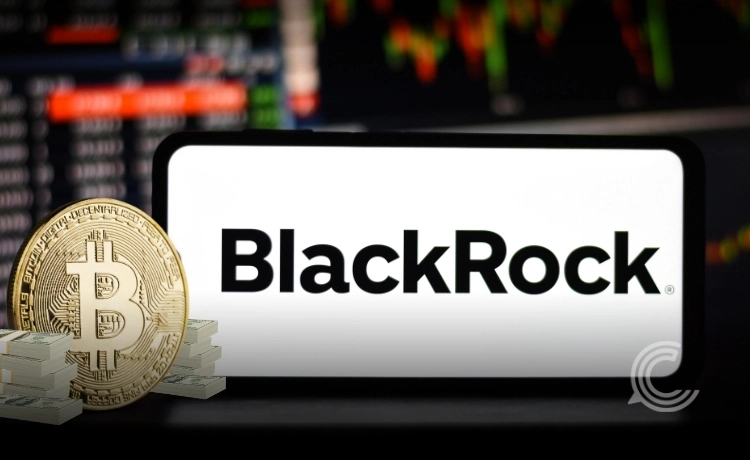$523M Flees BlackRock’s IBIT in Single Day, Is Institutional Bitcoin Love Fading?

Key Points:
- The iShares Bitcoin Trust (IBIT) from BlackRock experienced a record single-day outflow of approximately $523 million on Tuesday, marking a significant withdrawal since its January 2024 launch
- This massive redemption coincided with a sharp correction in the price of Bitcoin, which fell below the $90,000 mark for the first time in seven months
- The exodus from IBIT and other spot Bitcoin ETFs suggests a broader risk-off sentiment among institutional investors, raising questions about the asset’s “safe haven” appeal amidst macroeconomic pressures
The digital asset market, already grappling with a substantial price correction, faced a new shockwave this week as BlackRock’s flagship iShares Bitcoin Trust (IBIT) recorded its largest single-day outflow.
Investors pulled roughly $523 million from the exchange-traded fund (ETF), according to data reported by Farside Investors. The dramatic shift in flow dynamics challenges the narrative of unwavering Institutional Bitcoin adoption that defined much of the fund’s initial success.
Record Outflow Signals A Shift in Sentiment
The IBIT fund, which quickly became the largest and most successful spot Bitcoin ETF following its debut, had until recently symbolized the growing acceptance of digital assets within traditional finance. The $523 million outflow on Tuesday was not an isolated event; it occurred amid a fifth straight day of net redemptions for the fund, as reported by Bloomberg.
This selling pressure followed a sharp downturn in the underlying asset’s price. Bitcoin itself plummeted below $90,000, reaching its lowest level in seven months, according to Reuters. The combined effect has analysts questioning whether the initial euphoria surrounding the spot ETFs has given way to a cautious retreat.
The Institutional Pullback
The launch of U.S. spot Bitcoin ETFs in 2024 successfully democratised access to the cryptocurrency, lowering the barrier to entry for large financial institutions, pensions, and wealth managers. This record outflow, however, highlights the sensitivity of this new class of investors to market volatility.
“The crypto market entered a hangover in August,” said Kraken’s Global Economist Thomas Perfumo, suggesting that much of the previous demand was driven by borrowed money. This statement, reported by Investing.com, indicates that momentum seemingly peaked, and a corrective trend began months ago.
Furthermore, Brian Vieten, a research analyst at Siebert Financial, points to other contributing factors, including profit-taking by early investors and growing caution among firms that had aggressively added Bitcoin to their treasuries earlier in the year. Vieten noted, “Recently, many of these firms have begun trading at a discount to net asset value, which weighs on near-term market expectations for net new bitcoin purchases by these firms.”
Bitcoin’s Store-of-Value Status Challenged
The synchronized decline in Bitcoin’s price and IBIT’s assets under management (AUM) is forcing a re-evaluation of the cryptocurrency’s role in a diversified portfolio. Historically touted as “digital gold,” a hedge against inflation and economic uncertainty, Bitcoin has recently failed to exhibit this property.
In contrast to the crypto selloff, the price of gold has remained resilient. This divergence has led some market observers to suggest that investors are actively swapping Bitcoin exposure for the yellow metal, calling into question Bitcoin’s status as a reliable risk-off asset, as reported by Reuters.
LVRG Research’s Nick Ruck also commented on the macro environment, stating that institutional desks are “reacting to the macro backdrop—fiscal uncertainty, elevated rate expectations—and that’s weakening the store-of-value appeal that BTC and ETH usually command,” according to an analysis reported by Cryptodnes.
Correction or Capitulation?
While the short-term outlook appears bearish, some analysts suggest the market is experiencing a severe, though routine, late-cycle stress. Geoff Kendrick, Head of Digital Asset Research at Standard Chartered, maintains that the current correction is simply a “fast, painful version” of prior cycles, often followed by a recovery to new highs, as cited by Investing.com.
However, the speed and magnitude of the outflows, with the entire group of U.S. spot Bitcoin ETFs shedding billions in recent weeks, suggest a broader, reset-level move. The key question for the market is whether this record single-day withdrawal represents a healthy cleansing of leveraged speculation or the beginning of a sustained institutional retreat from the digital asset class. The answer will determine the immediate trajectory for the world’s most prominent cryptocurrency.



